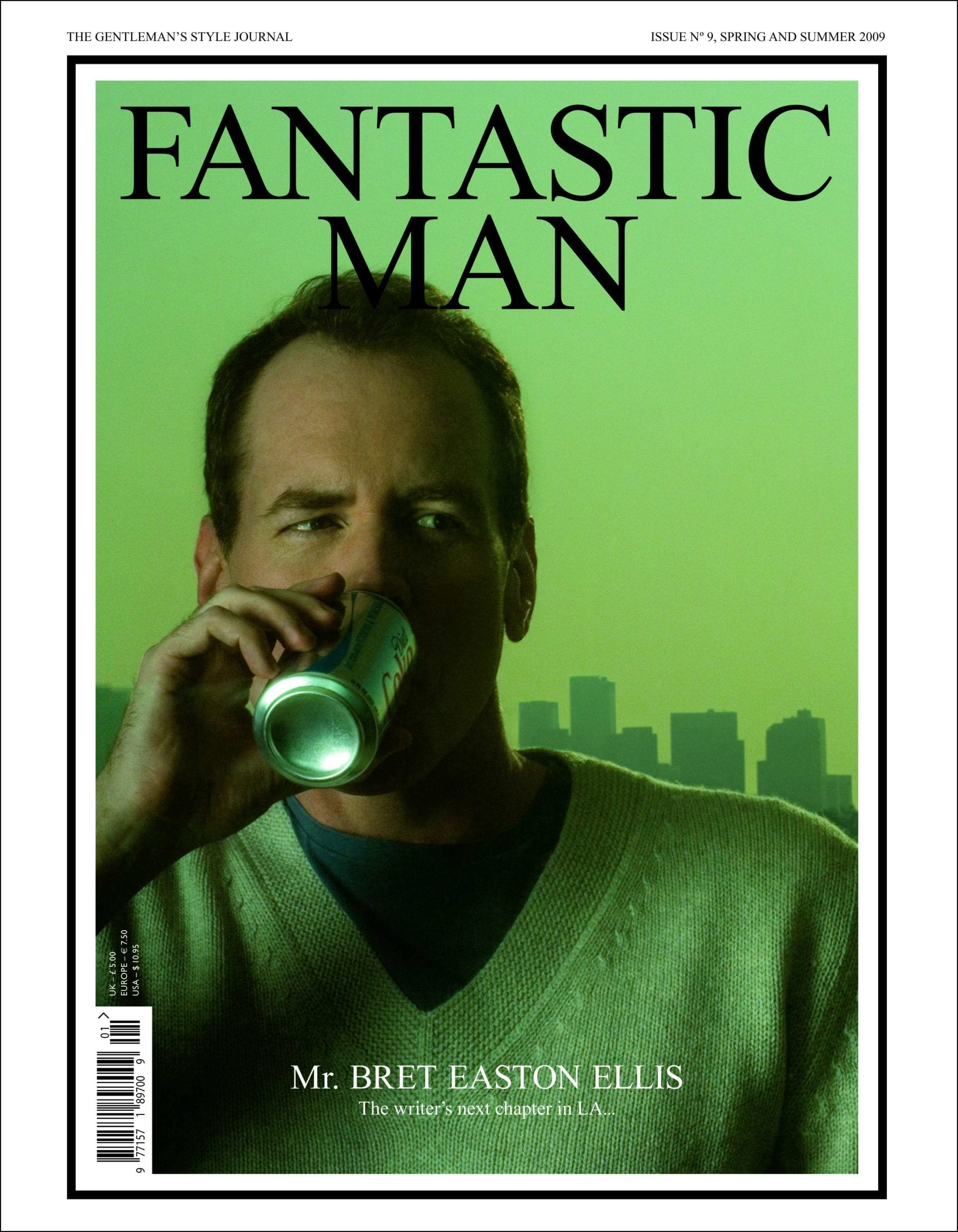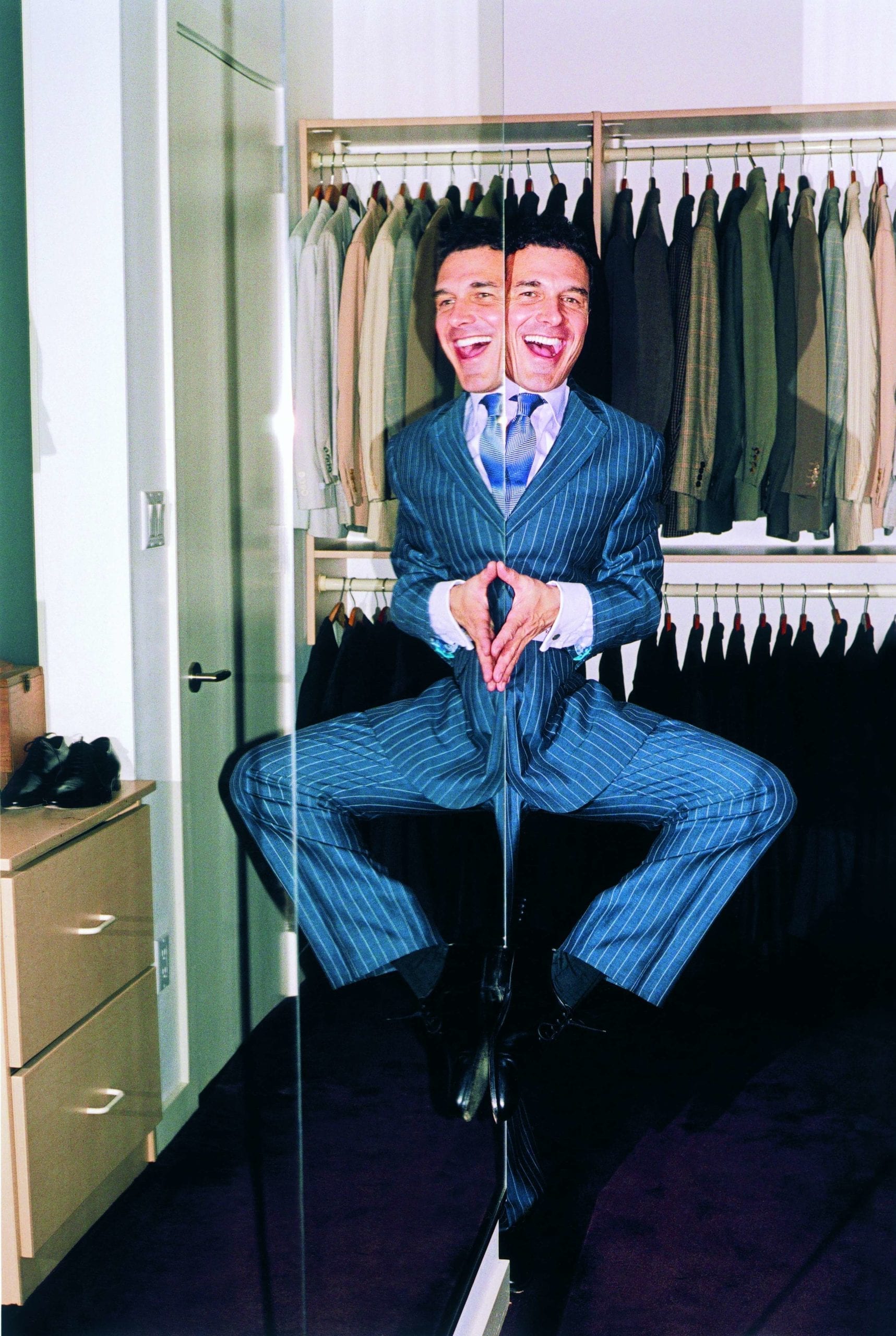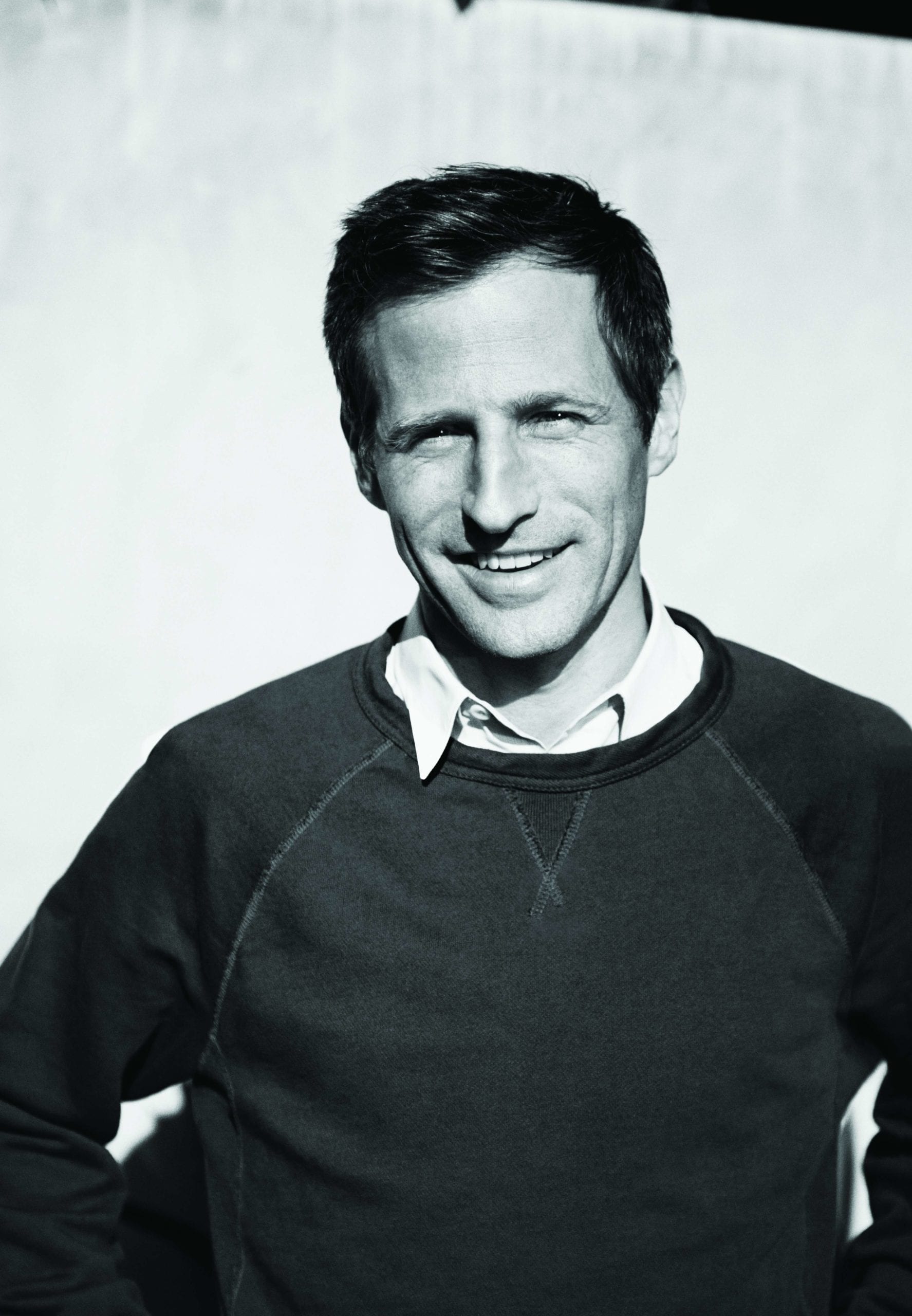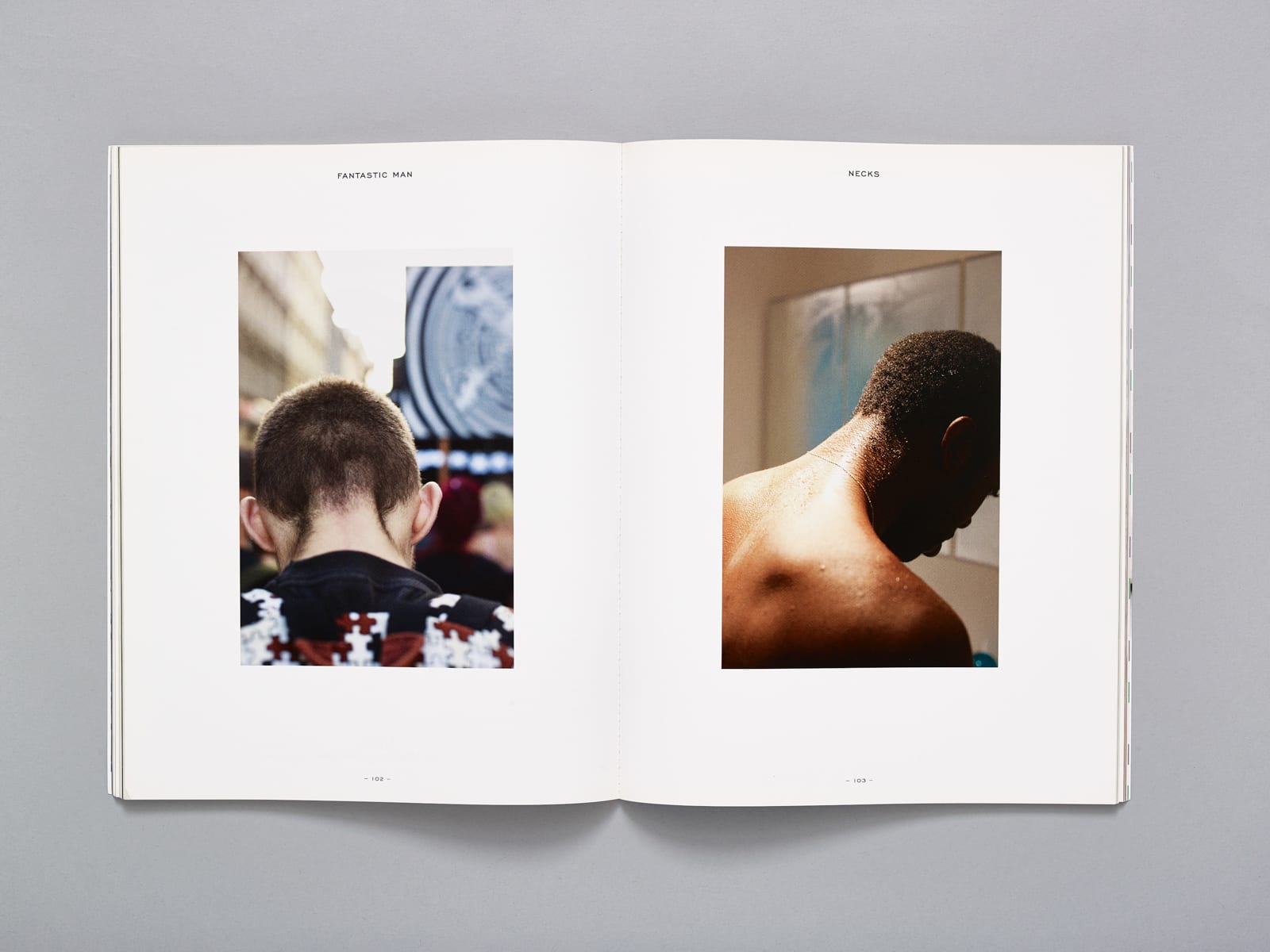Design-led and reproducing the images and its contents on high-quality paper, Fantastic Man never cut corners. Even the sponsored pages were in keeping with overall ethos of the magazine – an early adopter of what is now routinely called ‘native advertising’. Here, with its indifference to PR, its playful editorial, its defiant underlying message, was a new genre of menswear magazine, one that seemed in tune with the aspirations of style-conscious, street-level men, rather than another slavish, pandering paean to media-conscious celebrities and mute, boyish models.

“There was a point in the mid 2000s when the male models were getting younger and younger, and skinnier and skinnier,” van Bennekom told Emily King, editor of the Phaidon book. “We couldn’t connect with the models represented in existing men’s publications. We thought, ‘Let’s make a new set of rules, starting by breaking existing ones.’”
“Fashion for men had become a catwalk fantasy,” Jonkers says. “There were no magazines that covered real men, or grownups. Fantastic Man is very deliberately an older proposition.”
Such was the success of Fantastic Man that, in early 2010, Jonkers and van Bennekom decided to repeat the trick for another demographic; women. The Gentlewoman launched after they head-hunted Penny Martin as editor-in-chief, with Jop acting as creative director. Martin, whom holds a PhD on 1980s fashion magazines from the Royal College of Art and whom worked as the editor of the photographer Nick Knight’s groundbreaking website SHOWStudio in 2001 until 2004, was tasked with creating a magazine similar in ethos and tone to Fantastic Man, just for the opposite sex.

“We’ve got an anti-fantasy policy,” Martin said of the magazine she created with Gert and Jop. “That it’s revolutionary to show how people actually are is the sad revelation of our culture. Fashion media images of women have become so retouched out of all… not recognition, but tangibility.”
Few magazine launches have attracted the sort of anticipation, or attention, as the launch of The Gentlewoman. With Phoebe Philo, the creative director of fashion house Céline, on the cover, The Gentlewoman’s debut sold out in London within the space of few weeks, leaving everyone who had heard of the magazine with no choice but to wait for another six months for the next issue.
Martin and Jop have since achieved some notable coups; Beyonce, untouched and stunning in monochrome, was the cover feature in the months after she gave birth to her first child. Bjork and Vivienne Westwood have also featured, as well as the 87-year-old actress Angela Lansbury.

The publication has taken a complacent industry by storm. The Gentlewoman, in a short five years and ten issues, has become one of the most influential publications in the business; Martin a regular on the front rows of every major catwalk.
Both publications have a worldwide circulation of around 85,000 each. They publish biannually, selling advertising pages for more than £20,000, and consciously don’t attempt to establish themselves in the online space.
“We just don’t worry about online,” van Bennekom says. “It’s very difficult to quantify the value of traffic, of likes or shares. But a print magazine for readers; that proposition has only become stronger, particularly for the generation that grew up with online.”

Fantastic Man continues to innovate. Issue No 21, the first edition of 2015, saw a major redesign. A new sans-serif font was used, as well as a vertical masthead. For the first time, the magazine was full of colour photography, and divided into sections demarcated by a yellow page.
Jonkers and van Bennekom have seen their expertise sought by more commercial brands. On top of Fantastic Man, and The Gentlewoman, the two men also publish Cos Magazine, a creation for the Swedish high-street fashion retailer Cos, and The Happy Reader, a magazine made in conjunction with Penguin Books about the enduring faith in paperback stories. They have collaborated with the Stockholm-based fragrance house Byredo to launch a range of aftershave, a pair of “Gentleman’s Jeans” with the Swedish fashion label Acne, and line of underwear with the Swedish label White Briefs.
But Fantastic Man remains the priority, even as it threatens to become the establishment. “Fantastic Man tries to catch people when they are not topical,” says van Bennekom. “To find them at a moment when they don’t have something to sell and are a bit more vulnerable. I will always love that idea.”
“While most men’s magazines generate energy from talk of sport or money,” van Lamsweerde writes, “Fantastic Man has an optimistic masculine energy of its own.”
Fantastic Man: Men of Great Style and Substance, edited by Emily King with Gert Jonkers and Jop van Bennekom, £29.95
Subscribe to the BJP newsletter for more essential features on the best of contemporary photography. Delivered to your inbox every Friday.
Ten Years of Fantastic Man – the groundbreaking men's style magazine
Pages: 1 2

